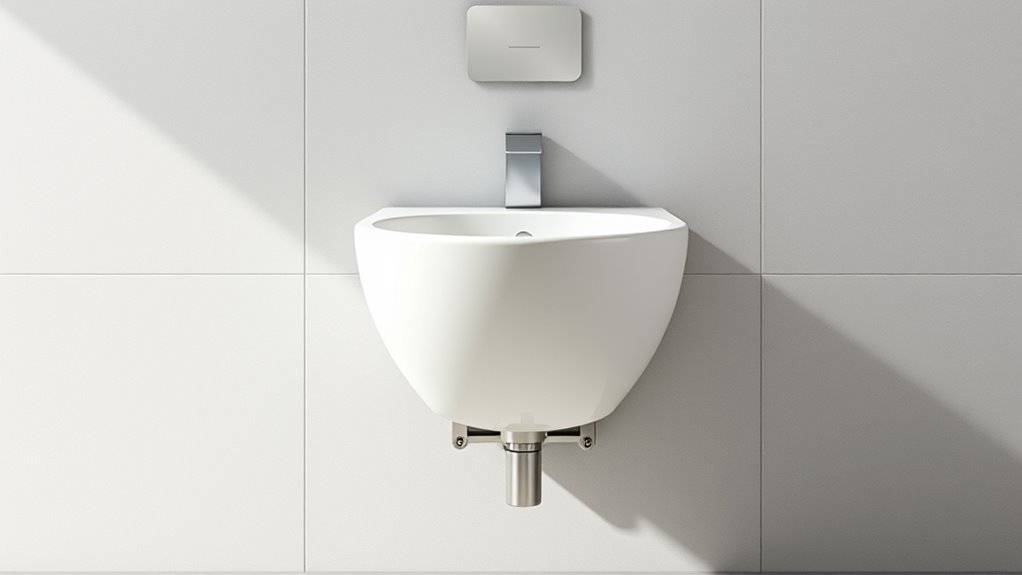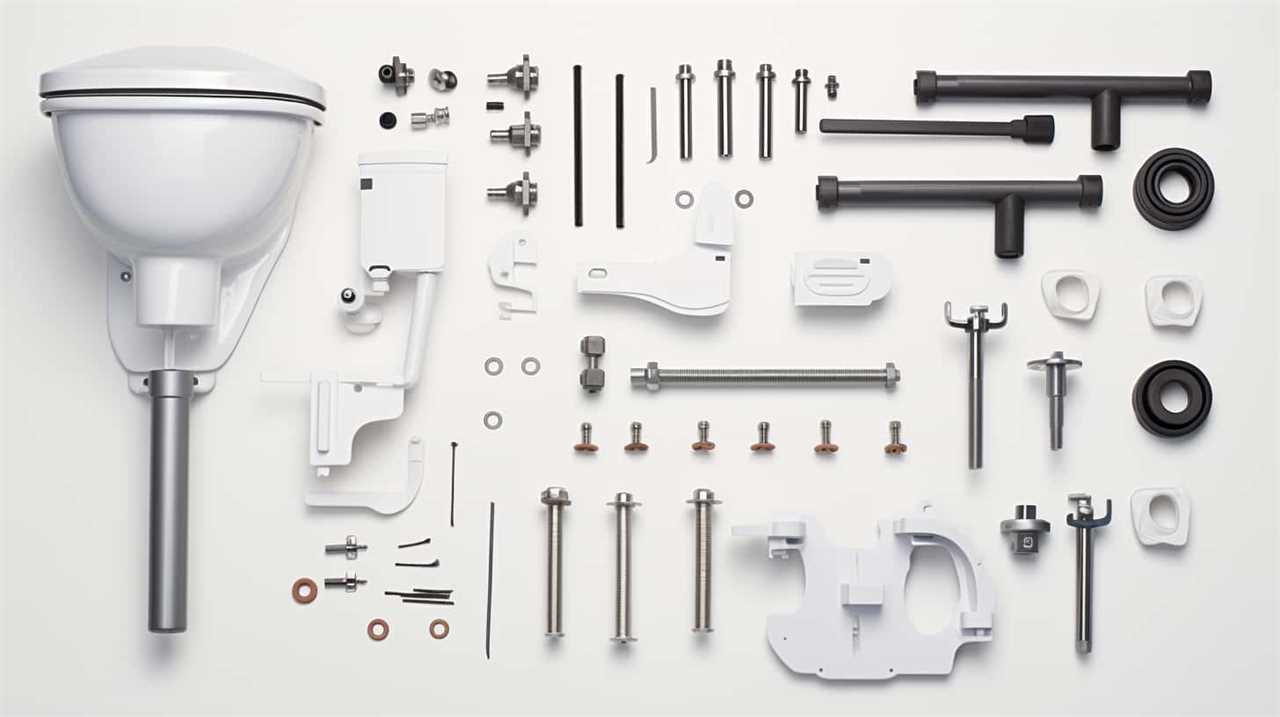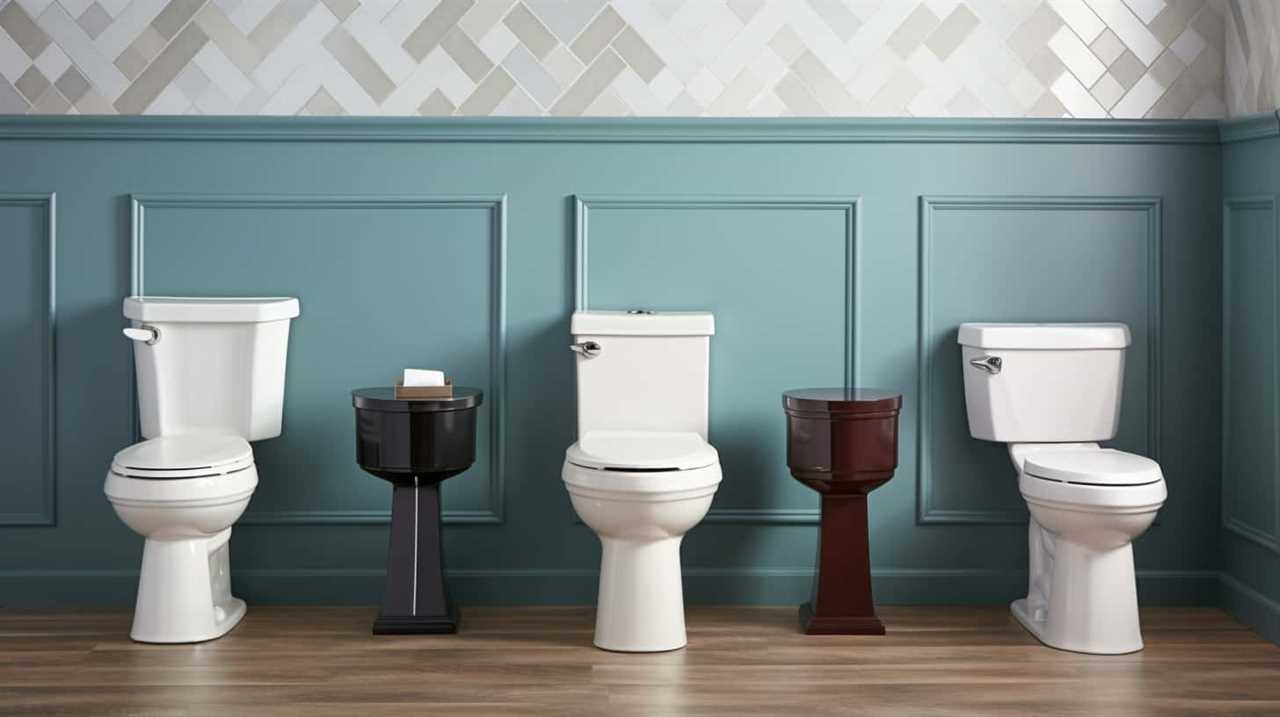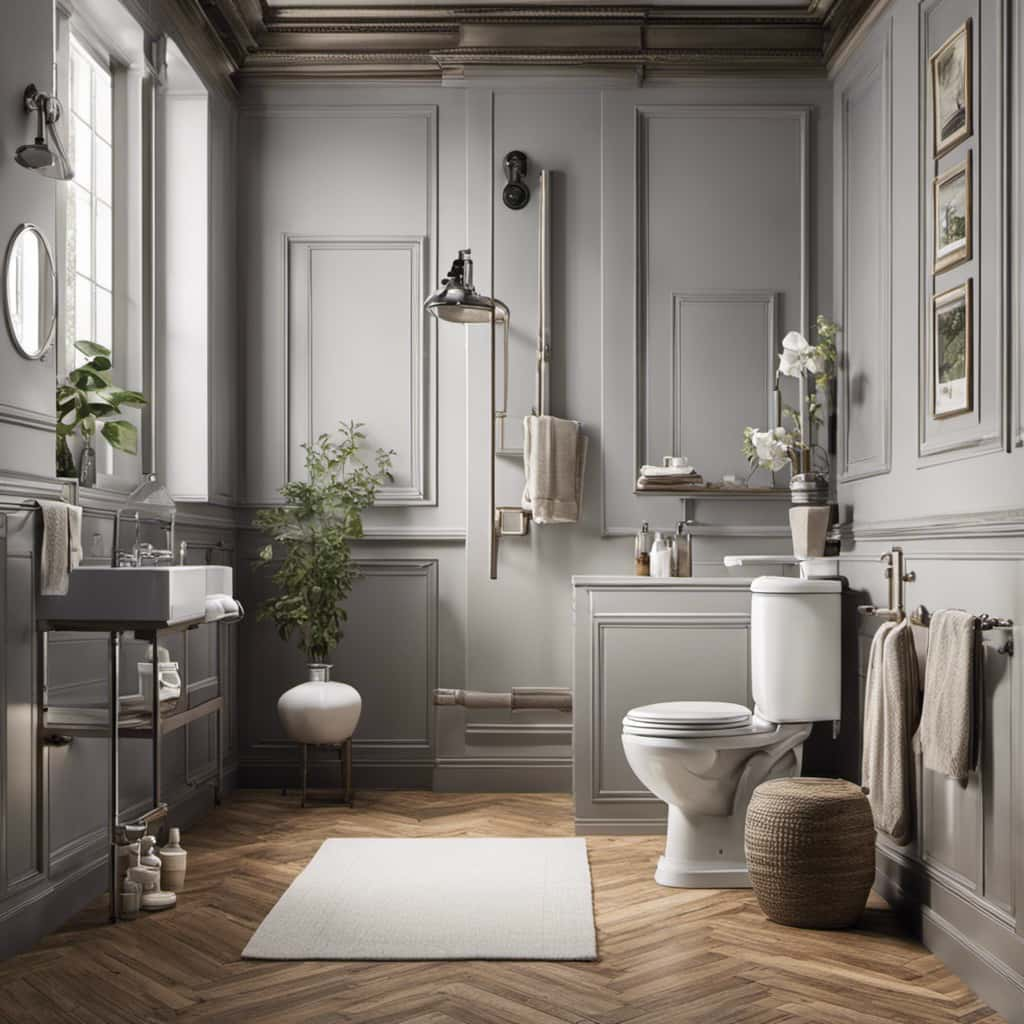When buying a wall-hung toilet, pick a sturdy, compatible frame with adjustable height and clear installation instructions. Make certain your wall can handle the weight; reinforce if needed. Follow manufacturer steps carefully, securing the frame to studs and ensuring proper alignment. Regularly inspect and maintain the unit for maximum function. To guarantee a smooth setup and lasting results, figuring out the best options and techniques now will make installation easier—stay with us to learn more.
Key Takeaways
- Choose a sturdy, compatible frame with adjustable height and weight capacity for reliable support.
- Verify wall strength and reinforce with appropriate materials like metal studs before installation.
- Follow manufacturer instructions carefully, ensuring proper alignment and secure anchoring to wall studs.
- Regularly inspect the flush mechanism, frame stability, and clean concealed parts to maintain functionality.
- Consider professional installation and quality materials to ensure safety, durability, and long-term performance.
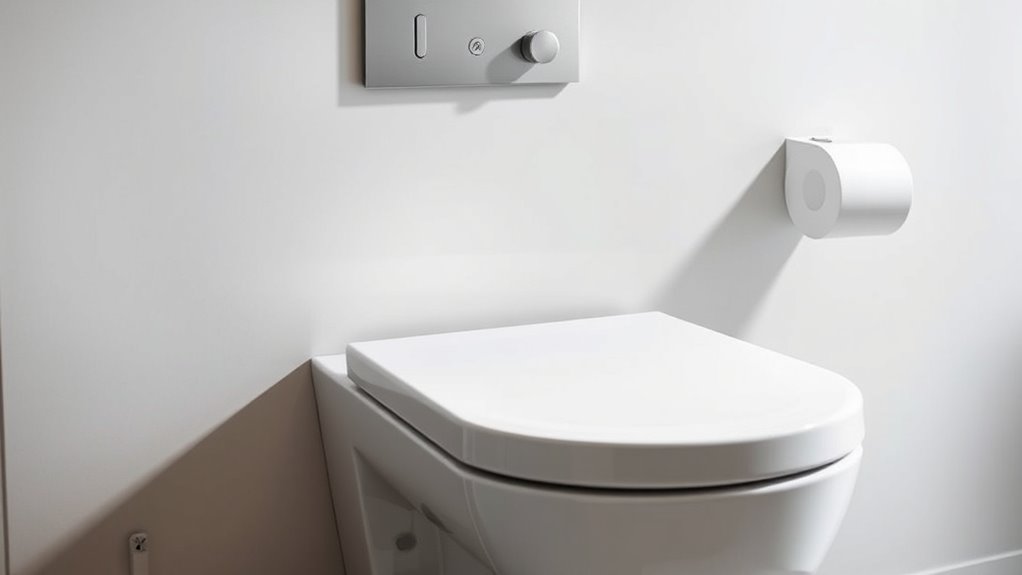
Wall-hung toilets have become a popular choice for modern bathrooms thanks to their sleek design and space-saving features. If you’re considering one, understanding how to choose the right frame and guarantee proper installation is essential. The frame is the backbone that supports the toilet, so selecting a sturdy, compatible model is vital. When shopping, look for frames that specify weight capacity and are compatible with your wall type to avoid future issues. Once you’ve picked out the right frame, focus on proper installation tips to guarantee safety and longevity. First, verify that your wall structure can support the weight of the toilet and the user. Reinforcing the wall with appropriate materials, such as metal studs or additional framing, helps provide stability. Next, consider the height at which you want the toilet to be mounted; standard heights are around 15 inches from the floor to the bowl rim, but adjustable frames can offer more customization. During installation, carefully follow the manufacturer’s instructions, paying close attention to aligning the frame correctly to avoid tilting or uneven mounting. Properly securing the frame to the wall studs and ensuring all bolts and brackets are tight will prevent wobbling and guarantee the toilet remains stable over time. When connecting the water supply, use quality fittings and check for leaks before proceeding with the finish wall surface. Once installed, remember that maintenance advice is key to keeping your wall-hung toilet functioning smoothly. Regularly inspect the flush mechanism and make sure the frame remains firmly anchored, especially if you notice any wobbling or unusual noises. Cleaning the concealed parts periodically prevents buildup of grime and keeps everything hygienic. Avoid harsh chemical cleaners that could damage internal components; instead, opt for gentle, non-abrasive disinfectants. Additionally, incorporating on-device AI capabilities in smart toilets is becoming increasingly popular for enhancing user experience and maintenance efficiency. If you notice persistent problems like leaks or reduced flushing power, consult a plumber rather than trying to fix complicated issues yourself. Proper maintenance also involves checking the flush plate for proper operation and replacing parts when necessary. By following these installation tips and maintenance advice, you’ll ensure your wall-hung toilet remains a stylish and reliable feature in your bathroom. Remember, investing in quality materials and professional installation if you’re unsure can save you time and money in the long run. A well-installed wall-hung toilet not only enhances your bathroom’s aesthetic but also provides lasting comfort and convenience.
Frequently Asked Questions
How Long Does a Wall-Hung Toilet Installation Typically Take?
Typically, a wall-hung toilet installation takes about 2 to 4 hours, depending on your space and preparation. You’ll need to take into account the installation timeline and make sure you meet preparation requirements, like wall reinforcement and plumbing adjustments. If you’re experienced, it might take less time, but if you’re hiring a professional, they’ll handle the prep work efficiently. Proper planning minimizes delays and ensures a smooth, quick installation process.
What Is the Weight Capacity of Wall-Hung Toilets?
Think of your wall-hung toilet as a guardian of comfort, holding up your daily routine. It typically supports a toilet weight of around 300 pounds, but always check the installation weight limits for safety. This guarantees your choice can handle everyday use without worry. Remember, respecting these weight capacities keeps your bathroom safe and reliable, turning your space into a sanctuary of peace and confidence.
Can Wall-Hung Toilets Be Installed on Uneven Walls?
Yes, you can install wall-hung toilets on uneven walls, but proper wall stability and preparation are essential. You’ll need to reinforce or level the wall beforehand to guarantee the toilet is securely mounted and functions correctly. Using a sturdy frame and possibly adding a backer board can help manage uneven surfaces. Always consult a professional to assess wall conditions and ensure safe, durable installation.
Are Wall-Hung Toilets Suitable for Commercial Use?
Wall-hung toilets are like sturdy ships in busy harbors—they’re built for heavy-duty use. You’ll find they excel in commercial settings thanks to their commercial durability and vandal resistance. Their sleek, seamless design withstands frequent cleaning and rough treatment, making them ideal for public restrooms. So, yes, wall-hung toilets are suitable for commercial use, providing the resilience and hygiene that high-traffic environments demand.
How Do I Access the Concealed Tank for Maintenance?
To access the concealed tank for maintenance, you’ll need to remove the maintenance panel. Usually, this panel is located at the top or front of the toilet, and you can release it by carefully pulling or unscrewing it. Once removed, you gain access to the concealed tank for repairs or inspections. Always follow the manufacturer’s instructions for panel removal to avoid damage and guarantee easy concealed tank access.
Conclusion
Now that you know what to look for, installing a wall-hung toilet becomes a smooth process. With the right frame and thoughtful planning, you’ll enjoy a sleek, space-saving bathroom upgrade that’s both functional and stylish. It’s funny how the right choices can transform your space, making it feel more open and modern. So, trust your instincts, follow these tips, and soon, you’ll be relaxing on your new, beautifully installed wall-hung toilet—bringing comfort and convenience together effortlessly.
